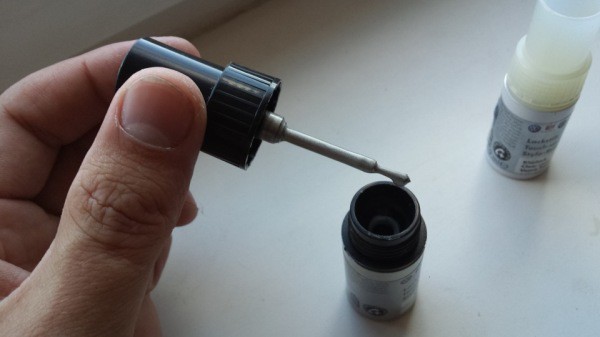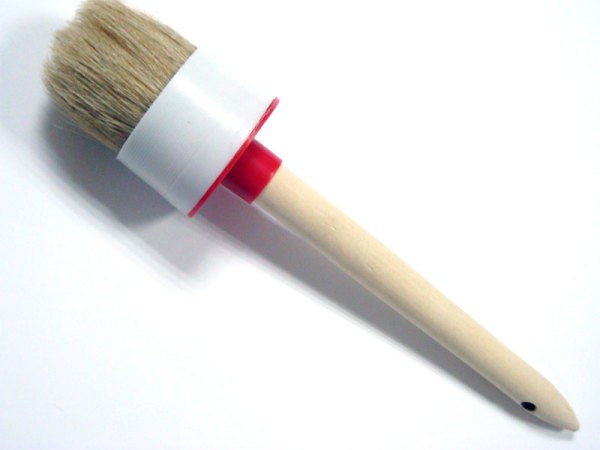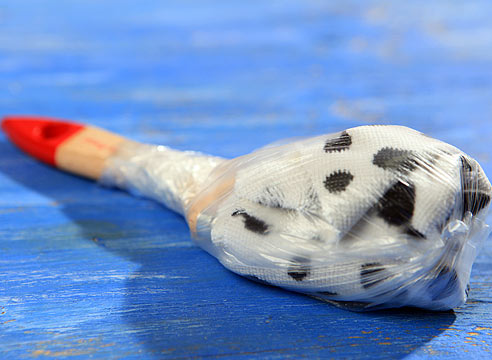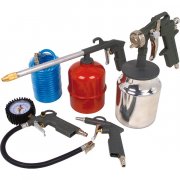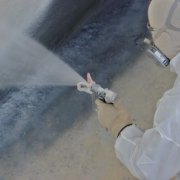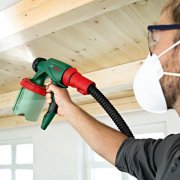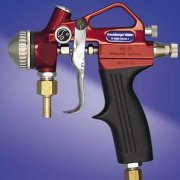Paint brushes: which ones to choose
A paint brush is a fairly functional tool that can not be avoided when repairing an apartment or a summer house. Despite the appearance of the rollers, it’s simply impossible to perform many works efficiently without a brush, for example to paint over corners.
The article tells about the properties of the product, how to clean the brush from paint after completion of work.
The content of the article
Types and features of tools
Before you paint something yourself, you must:
- Prepare appropriate and quality inventory.
- Decide on the material.
The choice of tool directly depends on the method of surface treatment:
- It is inconvenient to use large brushes in small areas.
- It is difficult to stain large areas with too small brushes.
Along with various modern tools for painting surfaces, brushes still remain, which depends on a wide selection of assortment of goods manufactured by manufacturers.
They differ:
- In size.
- By type of working part.
- According to the material taken for the manufacture of the item.
Tip: When choosing a brush, you should pay attention to its working part: will it be made of hairs or “bristles”.
Features of the working part are:
- The denser the hairs are located on it, the more the tool will absorb the paint, which will allow it to be returned less often to the bank for a new portion of the composition.
- The bristles on the brush are not always placed vertically, there are brushes with the arrangement of hairs across the base. This allows you to increase the amount of paint on the tool for one dipping, and more evenly process the surface to be painted.
To obtain an absolutely smooth coating, a brush with split bristles is selected that are sufficiently elastic and can easily return to their original position, the edges of the villi are shorter and longer in the center, which allows you to control the flow and distribution of paint on the surface.
- An important characteristic is the elasticity of the material, so that when pressed on the brush, the paint remains on the bristles, and not on the surface. Otherwise, the consumption of material will increase, which means that the cost of repair will become more.
Tip: At the end of the painting, the brushes should be cleaned of paint to maintain its original properties.
- The dimensions of the working part are selected depending on the area to be painted. For instance:
- walls and ceiling (see How to paint the ceiling with your own hands) should be painted with tools with a wide working part;
- chairs, tables, bedside tables and window frames (see How to paint wooden windows) - small items with different types of handles;
- when using zinga conductive paint that protects metal elements in the kitchen or in the bathroom, you need to take flat brushes.
Tip: The size of the tool should be determined by the clamp, which is located directly under the working part.
In any case, the length of the brush should be one and a half times greater than the width.
- The choice of material for the working part depends on the material to be painted:
- varnish and paints with a solvent are best applied with brushes with natural hairs. They absorb paints more than others because of the porous structure;
- water dispersible or water based paints should be applied with synthetic bristles, but not recommended with natural. Due to moisture, the latter will immediately lose its shape.
- The shape of the instrument plays on the speed and quality of staining. For instance:
- with a small brush with a rounded-shaped working part, one wall can be painted all day;
- a modern tool with wide bristles, for the same period of time you can do much more;
- a round brush, as in the photo, is best used when painting rounded small details, such as pipes;
- special corner brushes with slanting edges are offered for covering hard-to-reach spots;
- painting facades of buildings or ceilings is best done with special convenient tools up to 100 millimeters wide, which will save time.
How to prepare a brush for painting
Before starting work, any tool must be prepared. The quality of the painting depends on this process. Typically, a brush can be used to paint a simple paint on approximately 500 m² of surface.
When using water-based paints, the tool service life is doubled, and the surface area treated can reach 1000 m². To achieve such results, it is necessary to properly prepare for work and store the tool.
For this:
- At breaks in work the brush should be stored in a container with water or kerosene, you can hold it in drying oil or paint, which was painted.
Tip: When lowering the brush into the container, you must ensure that it does not reach its bottom, which can distort the tool. In this case, the brush should be hung on a carnation or hook, and use a special bath with a clip. At the same time, it is impossible to keep a brush in a wooden frame in water, from which the tree swells, and the bristles begin to come out.
- After finishing work, the brush must be thoroughly washed. Oil and paint from a brush are washed off with white spirit or kerosene, and then washed off with soapy water.
- It is not recommended to wash brushes in a solvent or gasoline. Such compositions dry the bristles, after which it can simply break or fall out.
To prepare high-quality brushes for different paints you need:
- Aqueous emulsion paint is easily washed off with warm water, which must be done
always finishing work. For this:
- the brush is washed thoroughly;
- water is squeezed from it;
- the bristles are given the correct shape;
- the tool is hung with bristles down;
- protruding bristles are tied with gauze.
Tip: Discarded brushes should not be discarded; they may still be useful for other works.
- Wet brushes should be well dried before using oil paint. Then they need to be aligned, having worked with a tool on any rough surface made of brick or concrete, first it needs to be moistened in water.
- To reduce brush wear, the manual suggests: when painting, rotate the brush periodically, which will provide more uniform bristle wear around the entire perimeter. This will avoid the formation of a “shoulder blade”.
- When working with various surfaces, the bristle wear is different. For example, when painting wooden boards, wear is less than from brick or concrete walls.
How to store brushes
How to save a brush after painting?
There are several ways to save a tool for a long time:
- If the brush is used for applying a primer or water-based paint, it is easily washed with water and dishwashing liquid.
- Brushes after enamel or oil paint should not be left in a jar of water. Although this will save from complete drying, the bristles become stiff, with adhering hairs, which will greatly reduce the quality of the coating. To avoid this, you must:
- after work, squeeze the brush well on the edge of the jar or special paint tray;
- the tool is wiped on a dry surface, which can be: cardboard, plywood, board;
- Before washing the brush from the paint, dried paint near the rim of the brush is removed with a metal brush and the bristle is divided into separate hairs, which will help the solvent penetrate deeper into the bristles.
- the brush is washed in a solvent:
- it is washed under hot water with a dishwashing detergent;
- the tool is bristled up or hung on a clove.
You can leave the brush overnight in a jar of paint or solvent so that only the pile is omitted.
If after a few days the same paint is used, the brush is not washed and does not dry. To keep it soft, you must:
- Take a clean cloth.
- Wet it in solvent.
- Lower the brush itself into the solvent.
- Wrap her hair with a cloth in several layers.
- Put a plastic bag on the brush and seal it with tape to get a sealed package.
Choosing a tool for painting the surface, you must choose the appropriate types of brushes and paints, take into account the area of painting. The quality and speed of the work depends on this, and the video in this article will help you find additional information on this topic.
